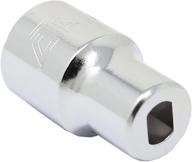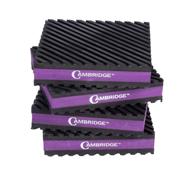Description of Competition Engineering C2720 Shock Absorber
Fits; Buick Apollo 1968-’79, Buick Century 1973-’81, Buick Grand National 1978-’88, Buick Riviera 1971-’78, Buick Skylark 1964-‘72, Buick Special 1964-‘72, Chevrolet Chevelle 1964-’83, Chevrolet El Camino 1964-’87, Chevrolet Fullsize 1965-’86, Chevrolet Malibu 1964-’83, Chevrolet Monte Carlo 1970-’88, Chevrolet Nova 1968-’73 (with Multi-Leaf H-D Suspension), Chevy S-10 Blazer 2WD 1983-’04, Chevy S-10 Truck 2WD 1982-’04, Oldsmobile Cutlass 1964-’72 (with out H-D Suspension), Oldsmobile Cutlass 1978-’88, Oldsmobile Fullsize 1965-’90, Oldsmobile Omega 1973-’79, Oldsmobile Toronado 1971-’78, Pontiac Fullsize 1963-’86, Pontiac Grand Prix, 1969- ’87, Pontiac GTO 1967-’73, Pontiac LeMans 1968-‘81, Pontiac Tempest 1968-‘72, Pontiac Ventura 1971-’77 (with Multi-Leaf H-D Suspension), Toyota Corona 1961-’64. Competition Engineering’s 3-Way Adjustable Drag Shocks are designed to allow the racer to dial-in the race car to meet changing track conditions. Shock valving plays a very important role in the way your car will perform both during initial launch and throughout the quarter mile. The principle behind our shock absorber design is to allow the front end of the race car to rise rapidly upon initial launch, creating greater weight transfer and better traction to the rear tires. As the car travels down the track, the front end will gradually descend to its ride height without unloading the rear tires which is a major cause of wheel spin. Our rear shocks work in conjunction with our front shocks making the transition from initial launch to top end charge as smooth as possible. Competition Engineering’s Front Drag Shocks are adjustable in three ratios: 90/10, 80/20 and 60/40. These ratios reflect the percentage of force required to extend and compress the shock absorber. You can quickly change the valve setting by simply compressing the shock fully and rotating the shaft until the indexing notch mates with the desired setting on the body. It’s as simple as twist and click. Our Rear Drag Shocks are also adjustable in three ratios: 70/30, 60/40 and 50/50. These ratios also represent the percentage of force required to compress and extend the shock unit. Only this time, the first number is compression and the second extension. These shocks also adjust by compressing them fully and rotating to the desired setting on the body.
Hide










